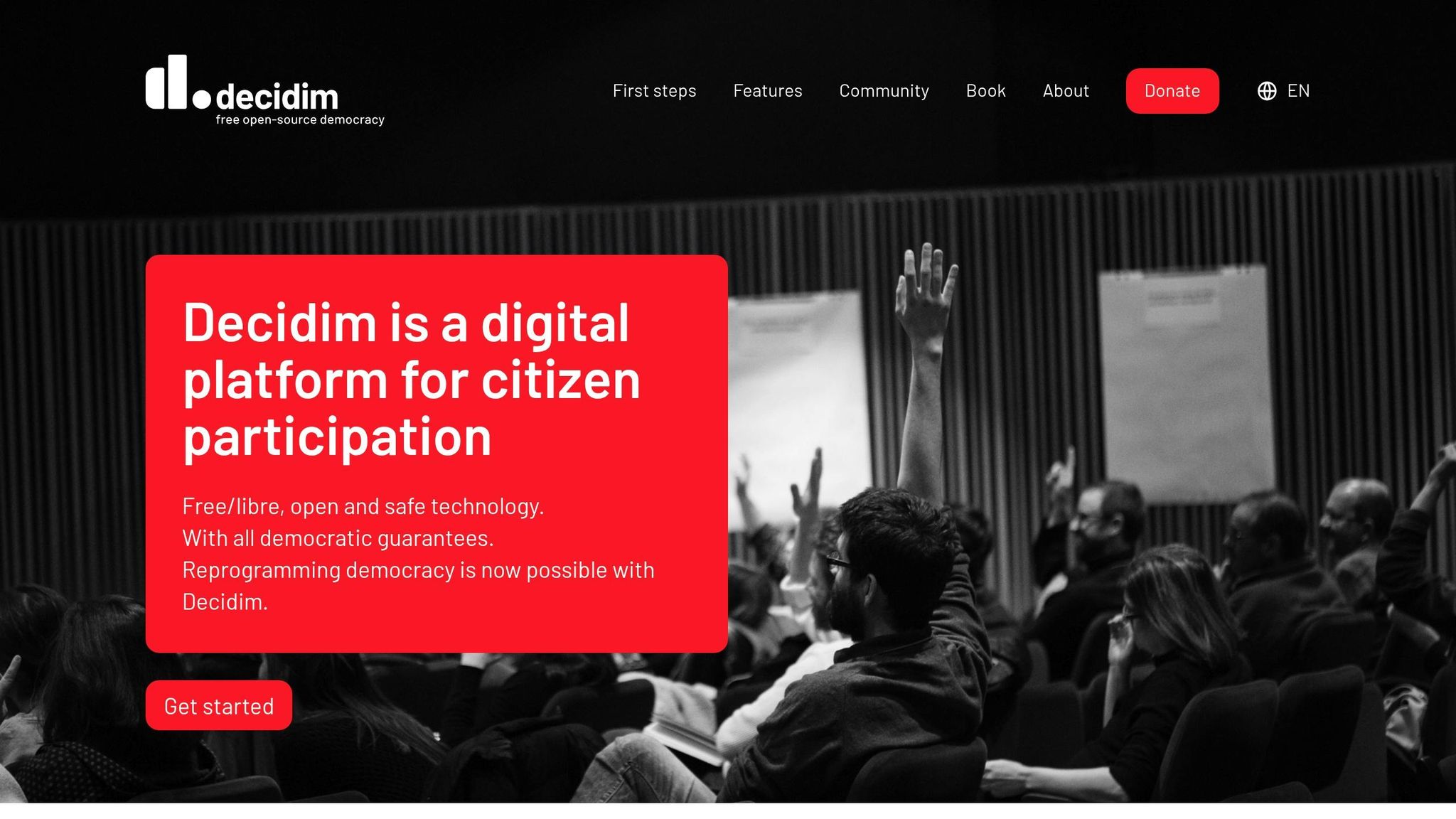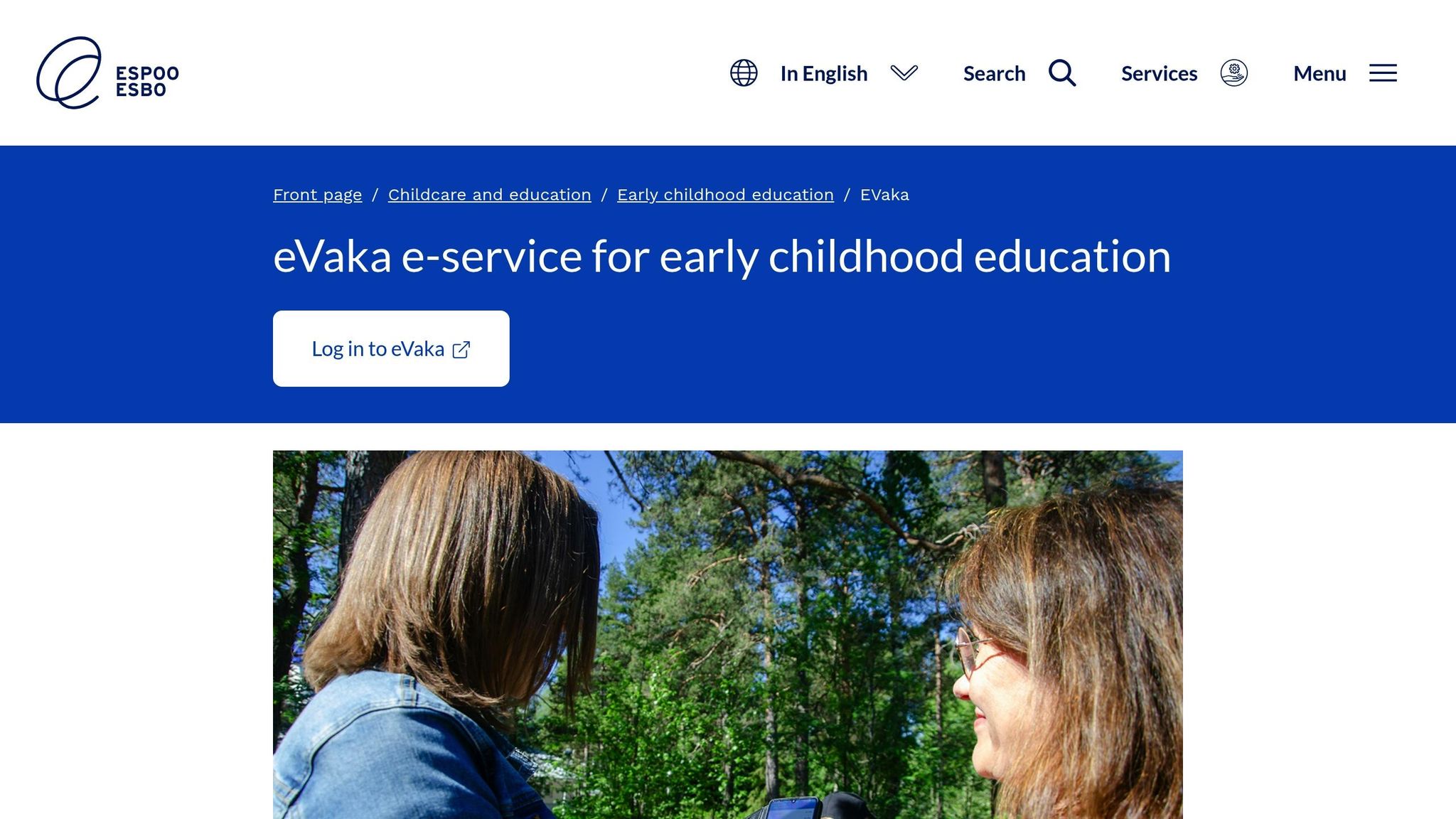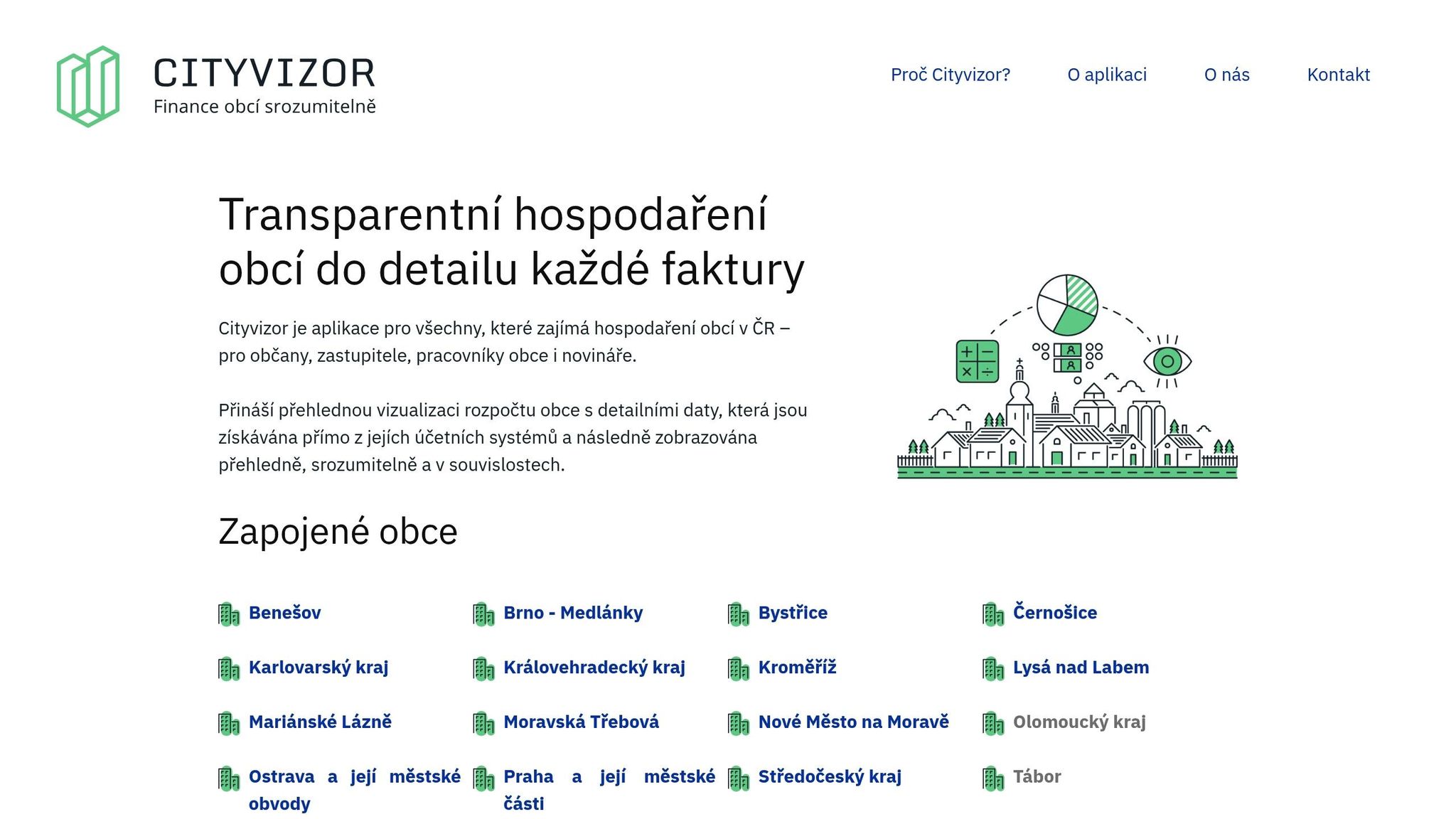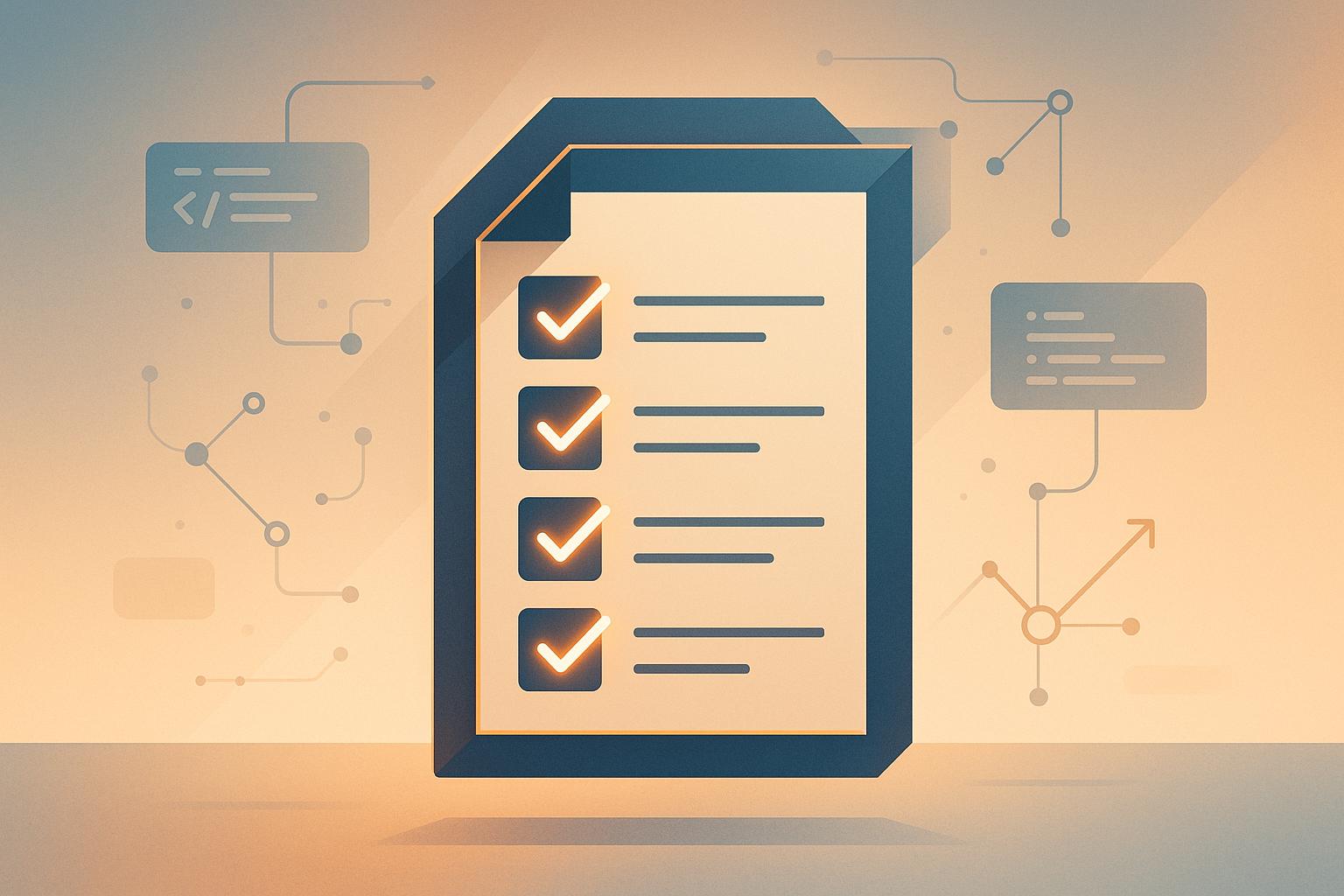


Explore how regional open source communities tackle local challenges while fostering global collaboration and sustainable growth.
Regional open source communities solve local problems while contributing to the global tech ecosystem. They bring together developers, governments, and organizations to create software tailored to unique local needs. By focusing on collaboration, trust, and clear governance, these projects address specific challenges while offering lessons for scaling and sustainability.
Key examples include:
- Decidim (Barcelona): A platform for participatory democracy, now used by 100+ organizations worldwide.
- eVaka (Finland): Simplifies early education management across municipalities, reducing costs and improving efficiency.
- Cityvizor (Czech Republic): Makes municipal budgets transparent, fostering public engagement.
Lessons for businesses:
- Shared resources and open standards improve scalability.
- Community-led governance builds trust.
- Clear documentation accelerates adoption.
- Consistent funding sustains long-term success.
Engaging with these communities requires precision, such as targeting developers through platforms like daily.dev Ads, which specializes in reaching niche technical audiences.
From Local Roots to Global Impact: Building an Inclusive Open Source Community in Africa
Key Elements of Successful Regional Open Source Projects
Regional open source projects succeed when they align key factors to encourage lasting collaboration. By focusing on community-building and establishing clear frameworks for working together, these projects lay the groundwork for meaningful progress and long-term impact.
Community Building and Networking
A strong community is the heart of any successful regional open source project. Unlike global initiatives that thrive on sheer scale, regional projects must focus on cultivating engagement within smaller, more connected groups.
Building trust is especially important when contributors come from diverse backgrounds, such as government, academia, industry, and local communities. Creating environments where everyone feels valued - regardless of their technical expertise or organizational ties - is essential.
Face-to-face interactions play a crucial role in building these relationships. Regular in-person events, like workshops or meetups, help onboard new contributors, offer learning opportunities, and strengthen the social bonds that keep people committed, even when challenges arise.
Knowledge sharing is another cornerstone of regional projects. These initiatives often tackle unique local challenges, so contributors need to understand not only technical aspects but also regulatory landscapes, local contexts, and the needs of various stakeholders. To ensure effective knowledge transfer, successful projects use multiple channels, including detailed documentation, tutorials, mentorship programs, and cross-training sessions.
Additionally, thriving regional communities connect with broader networks. By collaborating with other regional projects, participating in national or international open source events, and engaging with professional associations, these communities avoid isolation and gain fresh insights to address their local challenges.
Collaboration Models and Governance
A well-structured governance model can determine whether a regional open source project thrives or struggles as it grows. These projects face unique challenges in balancing the needs of diverse stakeholders while maintaining the flexibility that open source development requires.
Transparent decision-making is a must to maintain trust among contributors. Government agencies, private companies, and volunteers often have different expectations about how decisions should be made. Successful projects implement clear processes that respect these differences while ensuring no single group dominates the project’s direction.
Many regional initiatives adopt hybrid governance models, blending the openness of traditional meritocracy with more formal structures to accommodate institutional players. For example, they might create technical steering committees to handle code-related decisions while forming advisory boards to guide strategic goals. This approach allows for diverse input while maintaining accountability.
Managing funding and contributions effectively is another critical aspect. Successful projects develop systems that handle varied funding sources without creating dependency on a single entity or risking conflicts of interest.
Clear intellectual property agreements are equally important. Regional projects often involve multiple entities - governments, universities, and private companies - so defining licensing terms, contribution rights, and usage permissions early on prevents misunderstandings or disputes down the road.
As projects grow, their governance structures must evolve. Early-stage initiatives might rely on informal coordination, but as they attract more users and contributors, they often adopt more structured approaches to maintain quality and direction. Striking this balance between structure and collaboration ensures these projects remain effective as they mature. These practices set the stage for the success stories explored in the next section.
Case Studies of Regional Open Source Success
These examples show how regional open source initiatives can reshape public services and encourage collaboration across borders. By leveraging strong community networks and flexible governance, these projects demonstrate how local efforts can achieve impactful results. Let’s dive into three standout projects that showcase the power of open source in addressing regional needs.
Decidim: Participatory Democracy in Barcelona

Barcelona launched the Decidim platform to enhance citizen involvement in local decision-making. Designed as an open source solution, Decidim was created to handle large-scale participatory processes that traditional systems couldn’t manage effectively.
To tackle these challenges, the development team built a modular system that could adapt to different democratic needs while maintaining transparency and accessibility. By making the platform’s codebase open source, the city encouraged other municipalities to contribute and tailor the platform to their governance structures. This collaborative effort not only improved the platform’s functionality but also fostered a network of cities sharing ideas and solutions.
The platform’s evolution is guided by a governance body that includes local officials, civic organizations, and technical experts. Regular conferences and meetups for developers and users further strengthen this ecosystem, ensuring Decidim stays relevant and adaptable to new challenges.
eVaka: Early Education Management in Finland

The eVaka project in Finland is a great example of how open source collaboration can solve complex administrative problems in early childhood education. Before eVaka, municipalities relied on expensive proprietary systems that were often inefficient and difficult to manage.
The city of Espoo led the charge, developing eVaka as an open source platform to simplify and unify early education management. By working with local software professionals, Espoo created a system that handles everything from applications to daily operations, all while adhering to national regulations.
A key to eVaka’s success has been the shared resource model among municipalities. By pooling resources for training, system maintenance, and feature updates, participating communities have reduced costs and sped up improvements. This shared effort highlights how open source solutions can create efficient and sustainable public services.
Cityvizor: Fiscal Transparency in the Czech Republic

Cityvizor addresses the challenge of making municipal budgets more transparent and accessible in the Czech Republic. Previously, municipalities relied on static documents that made it difficult for citizens to engage with or understand budget data.
To solve this, Cityvizor was developed as a platform that transforms complex financial information into an easy-to-navigate, searchable format. By standardizing diverse accounting data through modular tools, the platform ensures that citizens have clear and detailed insights into local government spending.
The result? Increased public engagement and more informed discussions about municipal budgets. Cityvizor’s modular design has also made it easier for other municipalities to adopt the platform. A shared governance model, with oversight from multiple municipalities, ensures the project remains accountable and responsive to local needs.
sbb-itb-e54ba74
Lessons Learned and Best Practices
Regional projects highlight practical strategies for fostering long-term collaboration. These efforts show that success goes beyond technical skills - it hinges on building strong communities, establishing shared governance, and connecting with the right developers through targeted outreach.
Key Takeaways for Businesses
Shared infrastructure promotes efficiency.
Take eVaka, for example: pooling development costs and sharing maintenance responsibilities led to streamlined operations and better outcomes.
Open standards encourage scalability.
Decidim's modular design allowed cities around the globe to adapt the platform to their needs while contributing back to its development. Businesses can support similar initiatives by championing interoperability and standardization, enabling regional solutions to grow and attract diverse developer contributions.
Community-led governance fosters trust.
The case studies underline the importance of local, transparent governance in building trust and ensuring project sustainability.
Clear documentation speeds up adoption.
Cityvizor’s ability to simplify complex fiscal data underscores how vital thorough documentation and training are. By investing in detailed guides, developer tutorials, and community education, businesses can lower barriers for adopting regional open source projects.
Consistency beats one-time investments.
Ongoing funding for events, conferences, and maintenance yields better results than large, one-off contributions. A steady commitment helps sustain momentum and engagement over time.
These lessons provide a roadmap for businesses aiming to connect with engaged developer communities and support regional open source initiatives effectively.
Reaching Developers Through Targeted Outreach
When it comes to engaging developers, precision is key. Effective outreach to regional open source communities requires marketing strategies that resonate with developers and align with their unique preferences. Traditional methods often fail to reach the niche groups actively involved in these projects.
Developer-focused platforms drive engagement.
Consider platforms like daily.dev, which has reached over 1 million developers and logged more than 1 billion uses. Impressively, 40% of its users are classified as power users. These platforms excel at connecting with developers during their active research phases - when they’re exploring new tools, technologies, or communities.
"The ideal platform reaches developers when they're in discovery mode - on desktop, during work hours, with hyper-targeted, relevant ads. That's exactly what daily.dev offers."
– Nimrod Kramer, May 20, 2025
Hyper-local targeting reaches the right audience.
Daily.dev Ads allows businesses to engage developers in specific cities or regions through geographic targeting combined with technical criteria. This precision ensures outreach efforts resonate with developers where open source projects are thriving.
Native ads build trust.
By blending seamlessly into the developer experience, native placements - like in-feed and post page ads - feel relevant and non-intrusive. This approach strengthens trust and credibility within highly engaged developer communities.
Flexible campaign goals cater to different needs.
Whether the objective is to raise brand awareness, promote developer tools, encourage attendance at local events, or generate leads for collaborative projects, businesses can tailor campaigns to meet their specific goals.
A minimum spend ensures serious participation.
With a $5,000 minimum investment for both targeted and broad-reaching campaigns, daily.dev Ads attracts businesses that are genuinely committed to building meaningful, long-term relationships with developers.
Comparison of Case Studies
Examining these case studies side by side highlights the strategic differences in how each project approached community building, governance, and scaling. While all three shared the goal of enhancing public systems, their methods and outcomes were shaped by their regional contexts and specific challenges. Here's a quick breakdown of their approaches and results:
| Project | Origin & Governance | Scale & Adoption | Key Outcomes | Key Challenges |
|---|---|---|---|---|
| Decidim (Barcelona) | Transitioned from city government to a foundation model | 100+ public organizations globally | Global civic participation platform; political resilience | Political shifts; governance transitions |
| eVaka (Finland) | Municipal collaboration with centralized governance | Adopted across multiple Finnish municipalities | Streamlined education administration; improved efficiency | Interoperability issues; data privacy compliance |
| Cityvizor (Czech Republic) | Developed by Prague's city-owned IT company | Local focus with gradual expansion | Enhanced fiscal transparency; improved public oversight | Balancing local needs with broader community engagement |
Governance Models: Striking a Balance
Governance structures played a pivotal role in shaping each project's success and adaptability. Decidim’s transition from being city-controlled to operating under a foundation allowed it to weather political changes and expand its reach to over 100 organizations worldwide. On the other hand, eVaka’s centralized municipal governance ensured uniformity across Finnish cities, fostering collaboration. Cityvizor, developed under a city-owned IT entity, prioritized solutions tailored to local needs, though this limited its broader scalability.
Scaling and Community Engagement: Different Paths, Different Results
Each project took a unique route to growth and user engagement. Decidim's modular design and international focus led to rapid adoption across borders, creating a global network of contributors and users. eVaka focused on deep integration within Finland, leveraging strong municipal partnerships to ensure seamless adoption. In contrast, Cityvizor concentrated on local optimization before attempting broader expansion, which made it harder to engage communities beyond its initial scope.
Sustainability and Funding: The Role of Governance in Growth
Funding strategies were closely tied to governance models, influencing how each project scaled. Decidim’s foundation structure and global reach enabled it to diversify funding sources, reducing its dependence on any single government entity. eVaka benefited from steady municipal funding, supported by standardized protocols and inter-municipal cooperation. Meanwhile, Cityvizor relied on internal funding, which ensured consistent development but limited its ability to expand its impact.
Tackling Challenges: Priorities Shaped Trajectories
How each project addressed its challenges revealed its strategic focus. Decidim responded to political instability by shifting to a foundation model, ensuring continuity. eVaka tackled interoperability concerns by strengthening collaboration between municipalities. For Cityvizor, the tension between addressing local needs and expanding its reach was managed by prioritizing immediate community goals before exploring broader engagement.
These case studies offer valuable insights into how governance, scaling strategies, and funding models influence project outcomes. The lessons drawn from these examples will inform the best practices discussed in the following sections.
Conclusion
The stories of Decidim, eVaka, and Cityvizor highlight how regional open source communities can deliver impactful solutions by blending local expertise with collaborative development models. These initiatives demonstrate that innovation isn't bound by geography. From Barcelona's participatory democracy platform to Finland's education management system and Prague's fiscal transparency tool, each project has made a meaningful contribution to its respective local ecosystem.
One key takeaway for businesses is the importance of effective governance structures and community engagement strategies in determining the success and growth of such projects. For instance, Decidim's transition to a foundation model aligned its governance with the needs of its community, enabling sustained growth. Similarly, eVaka's collaborative approach ensured seamless integration into Finland's education system. Each of these projects succeeded by tailoring governance to the unique demands of its community.
Equally important is how businesses engage with regional open source communities. Successful outreach requires precision and a genuine connection with developers, aligning with their technical interests and collaborative mindset. Platforms like daily.dev Ads excel at this, connecting businesses with over 1,000,000 developers worldwide. By targeting developers geographically and technically during their active discovery phases, daily.dev ensures businesses reach their audience at the right moment.
"The ideal platform reaches developers when they're in discovery mode - on desktop, during work hours, with hyper-targeted, relevant ads. That's exactly what daily.dev offers." - Nimrod Kramer
These regional success stories offer a roadmap for businesses looking to engage with open source ecosystems. Whether through sponsoring hackathons, supporting community events, or providing resources, the key to success lies in understanding the specific needs and governance preferences of each region. The examples from Barcelona, Finland, and Prague showcase how balancing local relevance with broader community impact can create sustainable open source initiatives. Ultimately, these collaborations demonstrate how local efforts can drive innovation and strengthen the global open source community.
FAQs
How do regional open source projects like Decidim, eVaka, and Cityvizor address local needs while ensuring they can scale globally?
Regional open source initiatives like Decidim, eVaka, and Cityvizor thrive by blending a keen awareness of local needs with designs that are both flexible and scalable. These projects emphasize community involvement throughout the development process, ensuring the software aligns with the unique demands of the region. At the same time, they rely on open standards and modular designs, making their solutions versatile enough for use beyond their original scope.
By encouraging collaboration across different regions and embracing the principles of open source, these projects produce tools that work effectively at a local level while also attracting interest on a global scale. This strategy offers valuable insights for businesses and marketers aiming to strike the right balance between tailoring solutions to specific needs and ensuring they can grow and adapt for broader applications.
How does community-led governance contribute to the success of regional open source projects, and what are the best practices for implementing it?
Community-led governance plays a key role in driving successful regional open source projects. When local contributors are empowered to make decisions, they develop a stronger sense of ownership, work more collaboratively, and help ensure the project meets the unique needs of their community. This approach also fosters trust and keeps participants engaged over the long haul.
To put community-led governance into practice, it’s important to define clear roles and responsibilities for contributors. Transparent decision-making processes and open communication channels, like forums or regular meetings, are essential for collaboration. Recognizing and rewarding contributions can go a long way in keeping the community motivated and inclusive.
How can businesses effectively engage with regional open source communities and help them grow?
Businesses can connect with local open source communities by getting involved in their activities and offering practical support. One way to do this is by sponsoring events like meetups, hackathons, or workshops, which encourage collaboration and spark new ideas. Providing funding or access to tools and resources can make a big difference in helping these communities grow.
Another approach is to actively contribute to open source projects. This could mean sharing code, offering mentorship to developers, or teaming up to tackle challenges together. Building authentic relationships with community members and respecting their values is key to earning trust and fostering lasting partnerships. By supporting these communities, you not only help them succeed but also establish your brand as a valued member of the developer world.






